A sweet little bowl from David Fisher caught my attention a few months back. That bowl inspired me to find my old “Boy Scout hatchet,” refurbish it, find an adze, and set out on a bit of green woodworking. But first, let’s look at a different kind of green woodworking half way around the globe.
Woodcarver Andrei on Kizhi Island, Russia
Kizhi Island, a smallish island in Lake Onega in Russia, is now a museum. The island is home to dozens of wooden buildings, many of them churches, the largest of which is the Church of the Transfiguration, which supports 22 onion-shaped wooden domes. It would be easy to fill a long blog post with pictures and stories of those churches, but I will focus this post on the wooden domes and the aspen wood shingles* that cover them. In particular, we will watch Andrei demonstrate how those shingles are created.
Our visit to Kizhi was early in the morning and I found Andrei just getting ready for his work. He was sharpening his two hatchets. He used what appears to be an Arkansas stone, and no stropping.
Using only hand gestures (I have no Russian language skills), I asked if I could test the sharpness of one of his hatchets. His answer was the universal back and forth wagging of a finger.
Andrei then went about making a shingle, which I captured in two videos. First, he splits a blank from an aspen log he had nearby. I found it interesting that his splitting wedge appears to be yet another hatchet blade with the handle loop broken off. His log is also just the right length for a shingle, and splits cleanly.
Then, in a mere 2 minutes, Andrei shaped the blank into a shingle. I was interested not only by the shape of the log block he uses as a “workbench,” but how efficient each of his actions are. Note how after cutting one notch, he walks the blade across the blank to the other edge to place a notch there. No rulers, no squares, no pencils, just thousands of previous “muscle memory” actions.
*Why aspen? One article about Kizhi cites:
Aspen is flexible, strong and doesn’t burn easily. … Aspen shingles weather to a beautiful silvery-grey and are resistant to rotting and warping.
Kizhi Island offers woodworkers and carvers who enjoy seeing how old log buildings are constructed, fretwork ornamentation, ironwork and various household and workshop items, more than one has time to see. (slideshow hint: For more detail, right-click on an image, then select open in a new tab.)
My own hatchet
The primary difference between a store bought utility hatchet and one used for woodcarving is how the blade is honed. Andrei’s hatchets are very nicely honed for carving. Next time, a look at my refurbished hatchet.

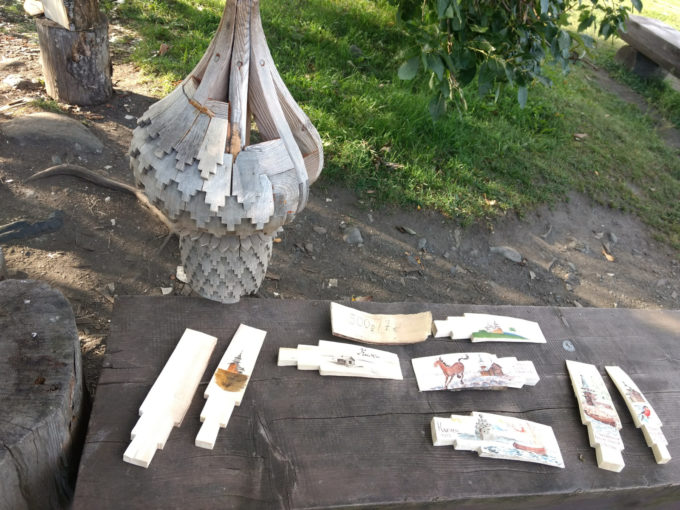
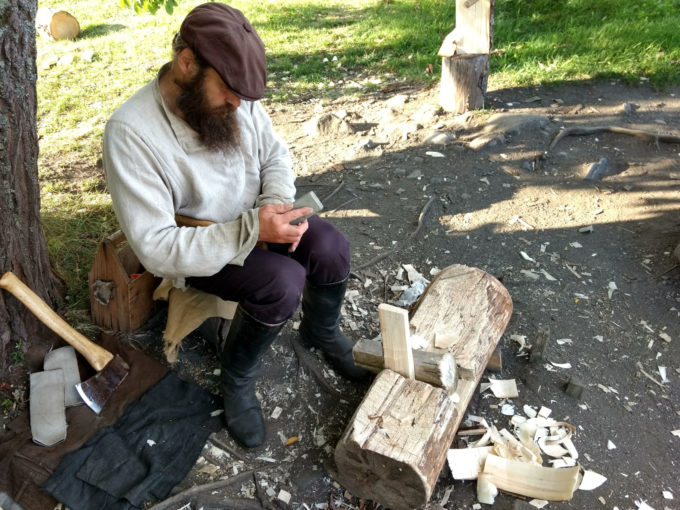
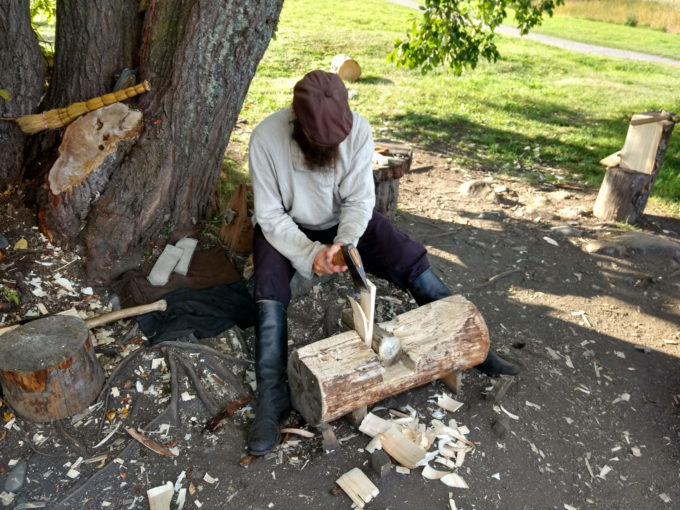
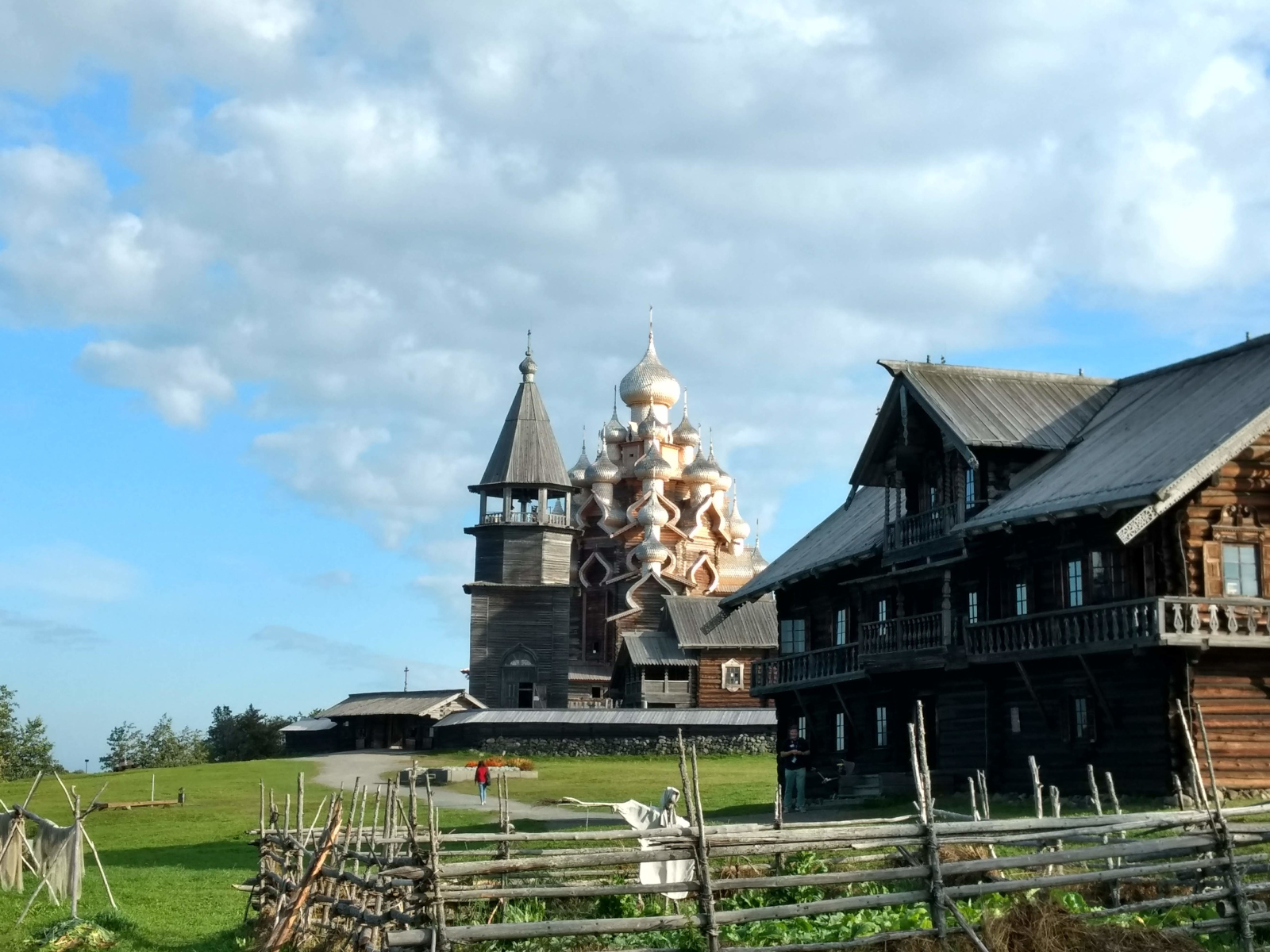
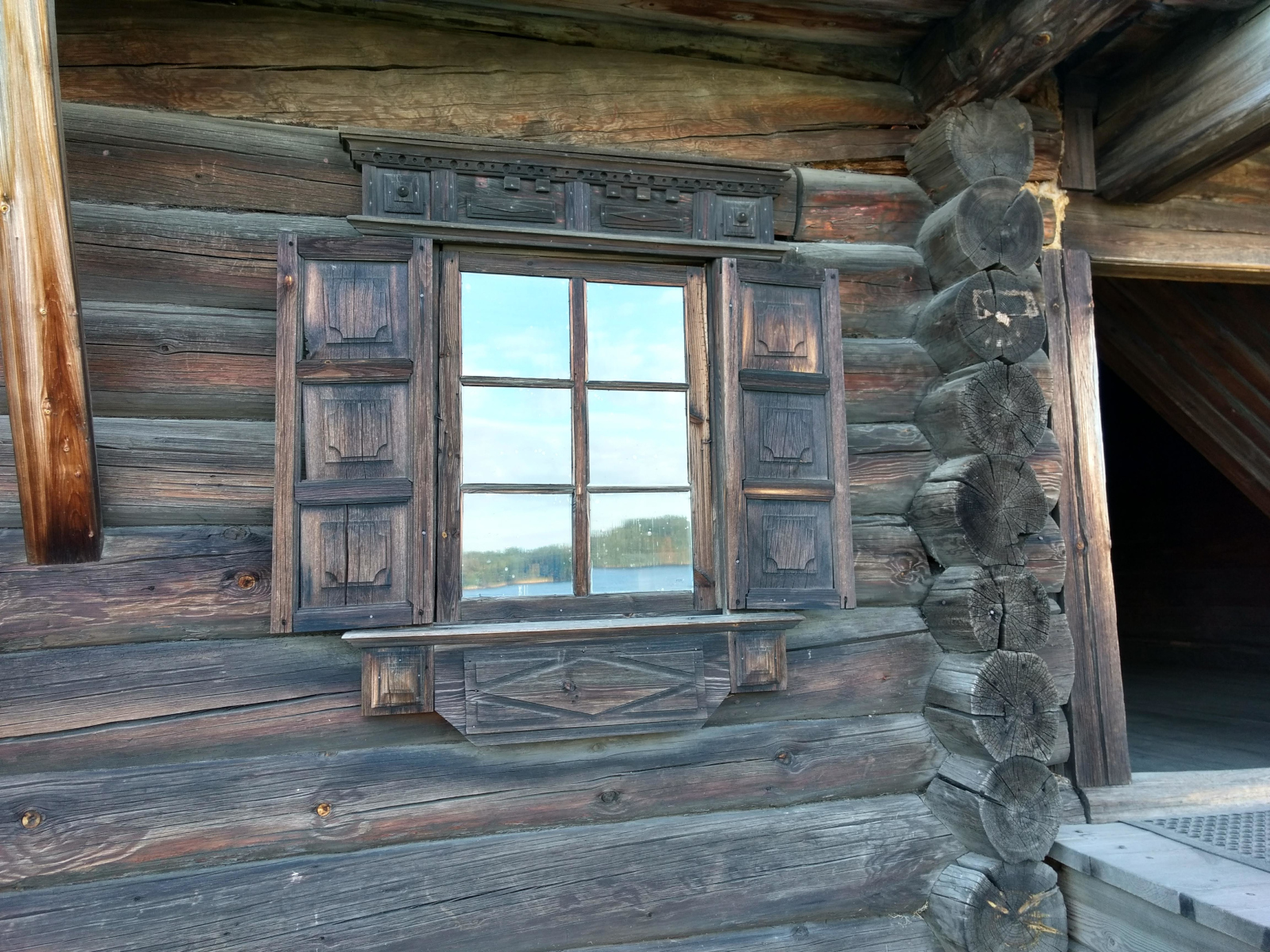
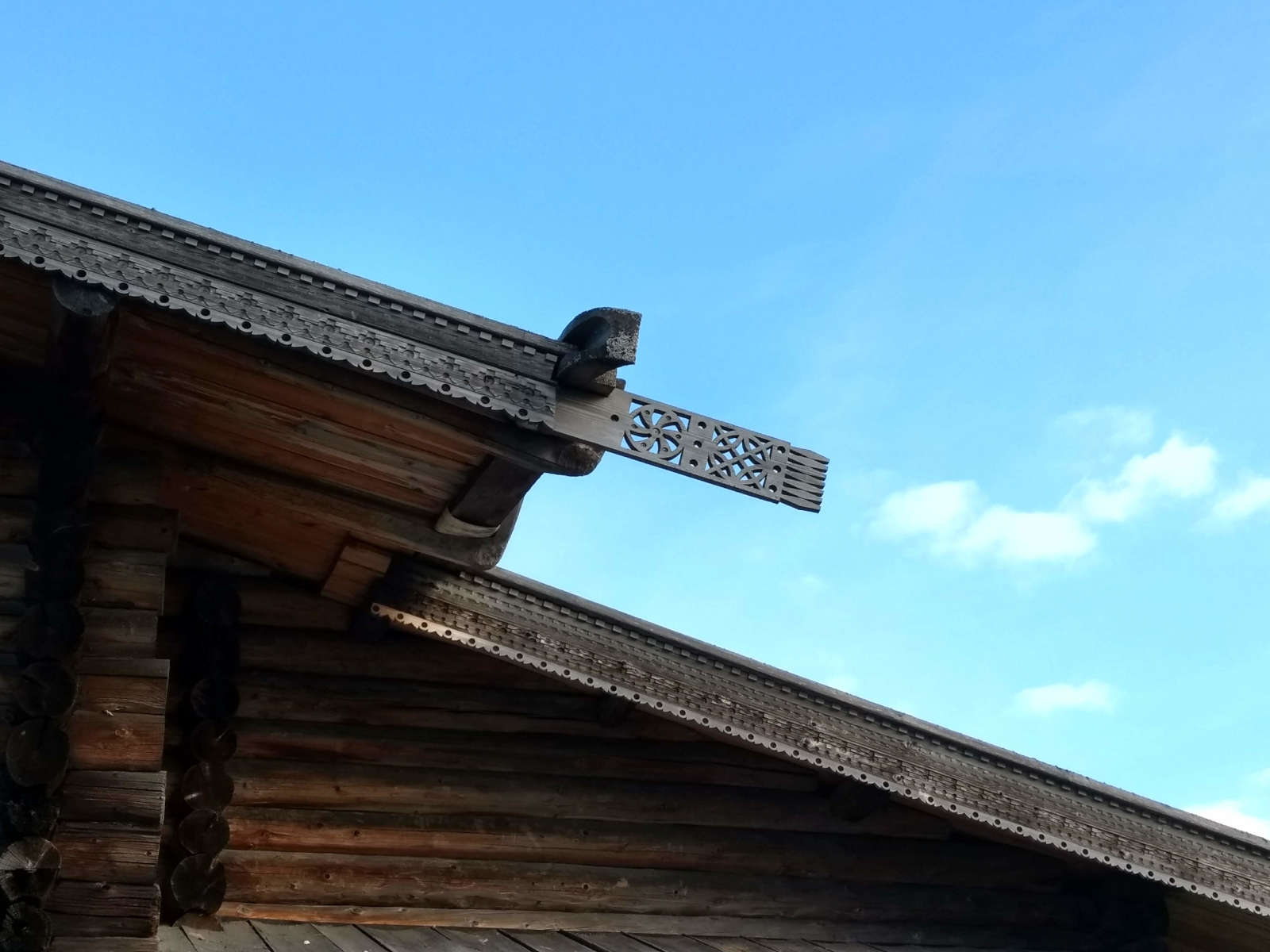


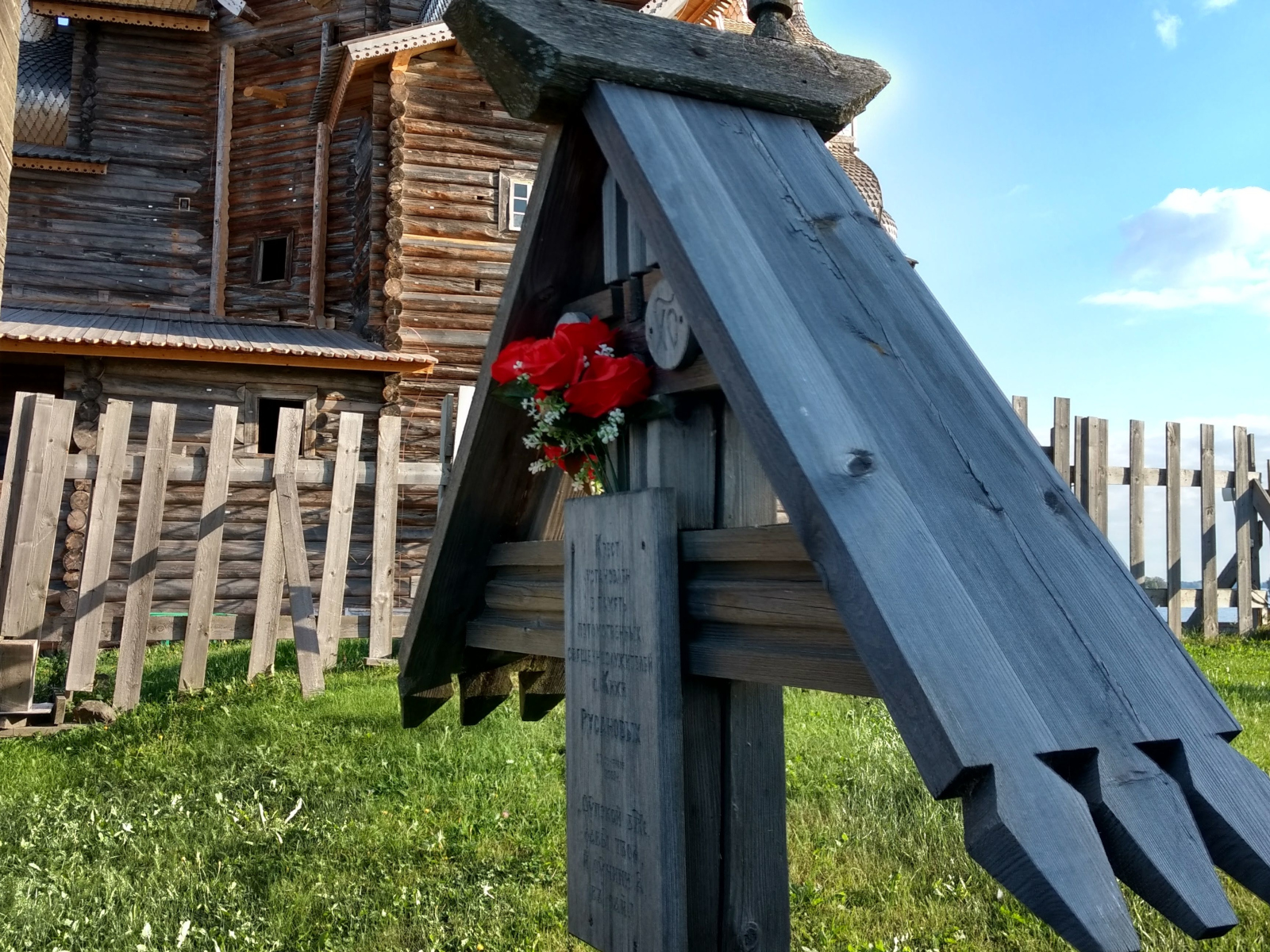
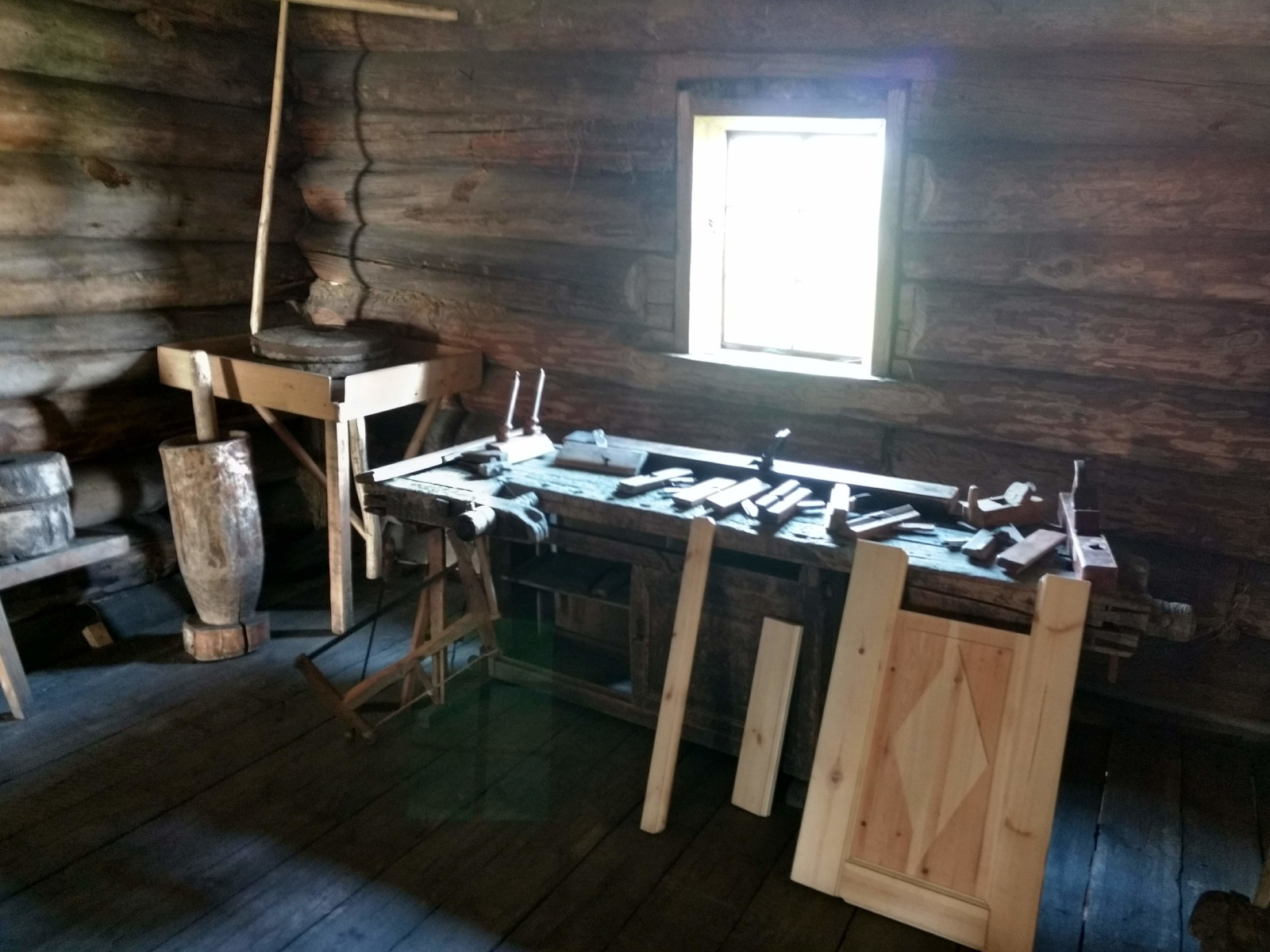
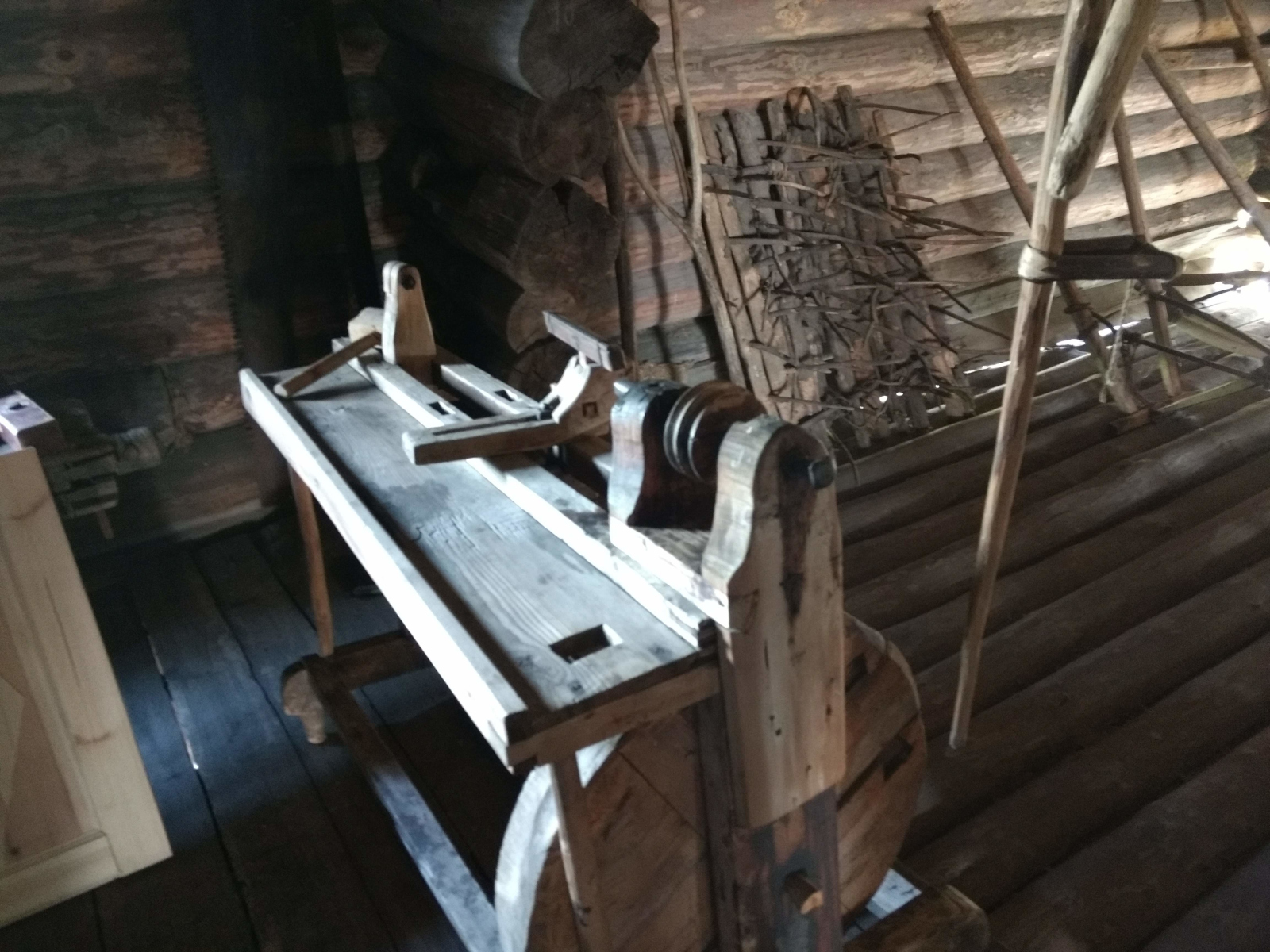
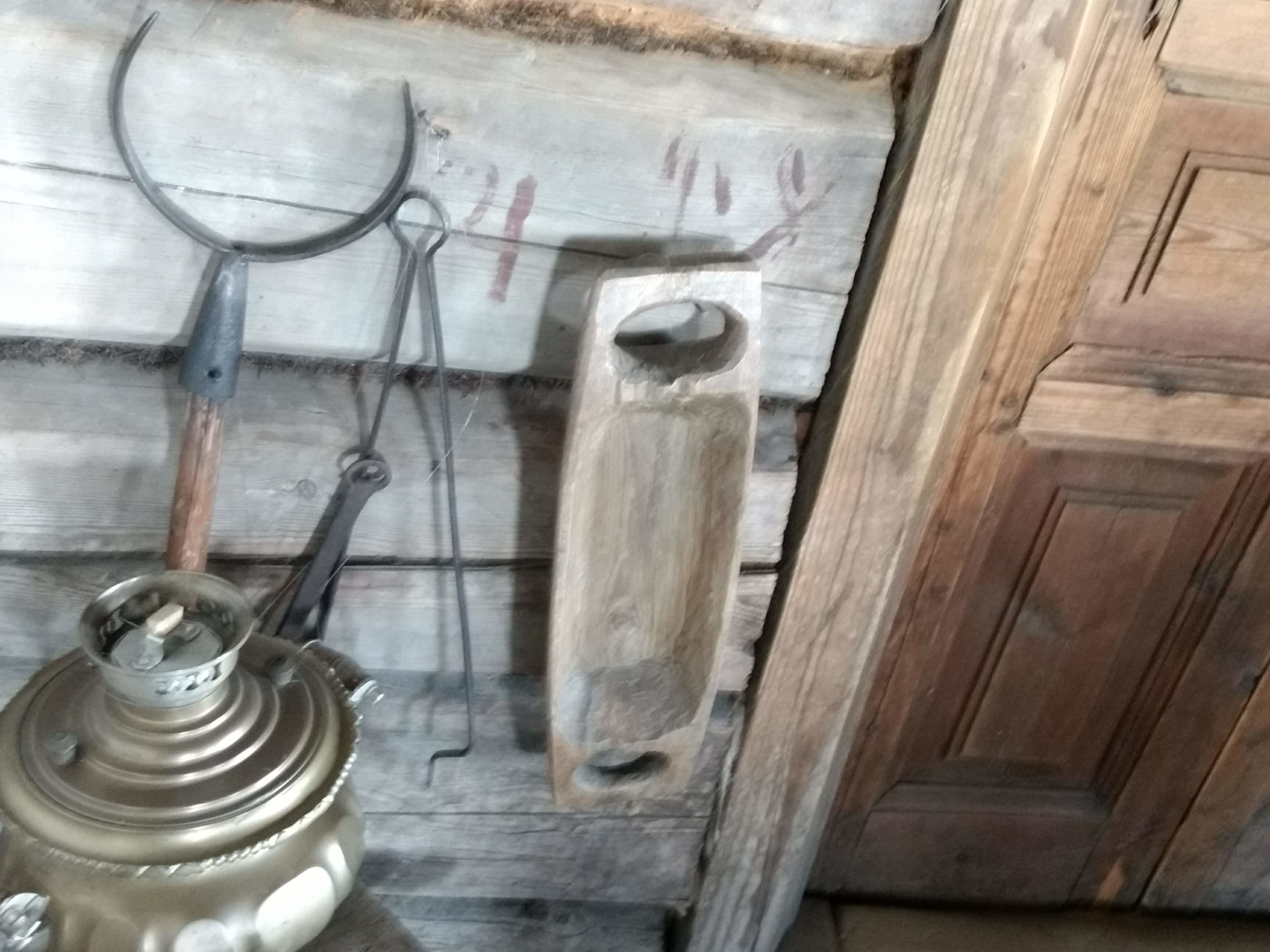
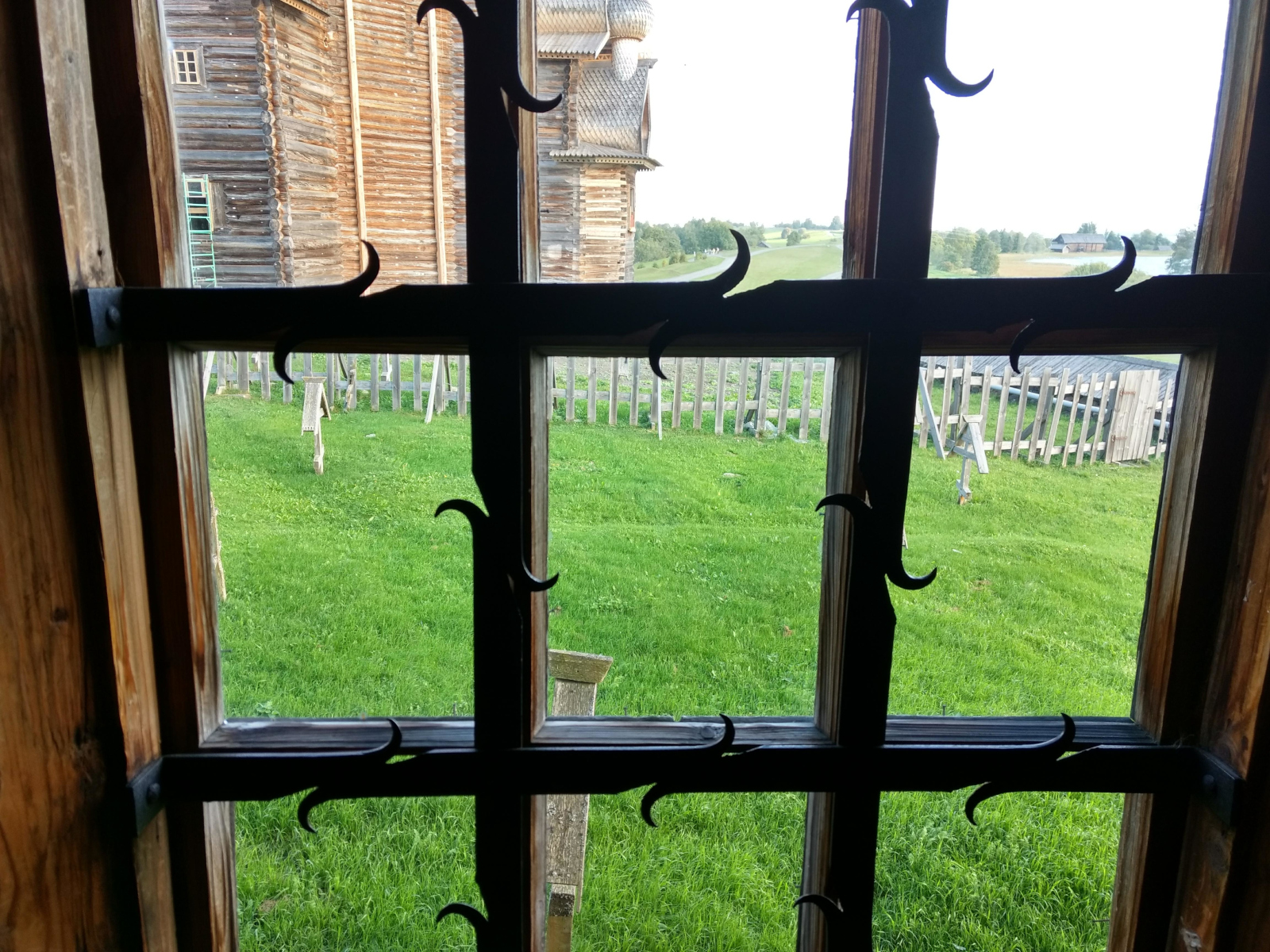
Those axes are Russian military surplus, I think. I have one that I bought from one of the USA surplus places for $10! Quite a while ago, now. Wish I’d bought two. They come with a completely straight edge and a kind of crude handle. I have wondered if the intent is for the user to shape the edge and handle to his/her liking. I see this fellow has ground a curved profile on the edge. They are good axes, I think.
skill, experience
impressive cross-grain planing with the axe
danny
You’re right Danny. It’s easy to be impressed with that cross-grain cut. It certainly needs a sharp hatchet.
On the other hand, think about using a hand plane. Very often, cross-grain work is easier than working with the grain, especially when “with the grain” is really against the grain.
One thing is certain: Andrei’s hatchets are very sharp.
Wow! That is an experienced craftsman at work.